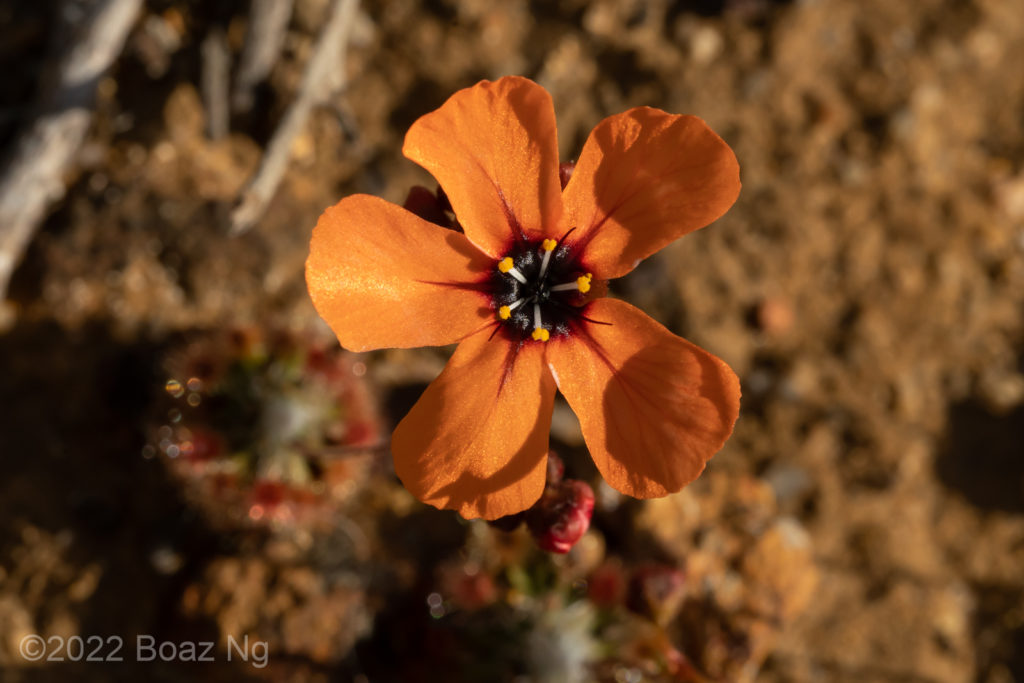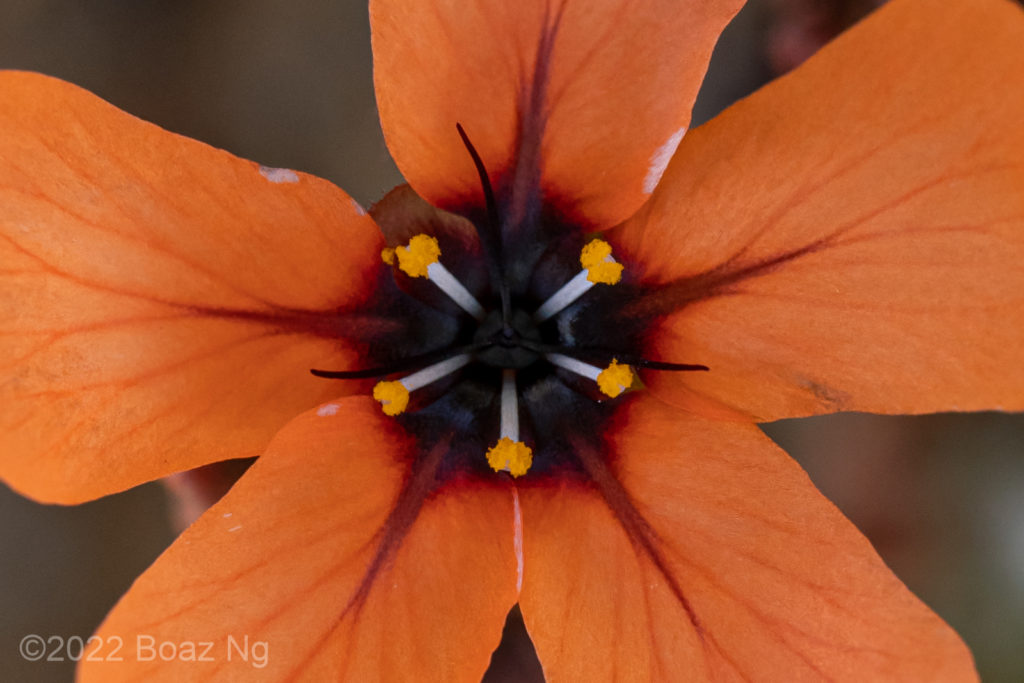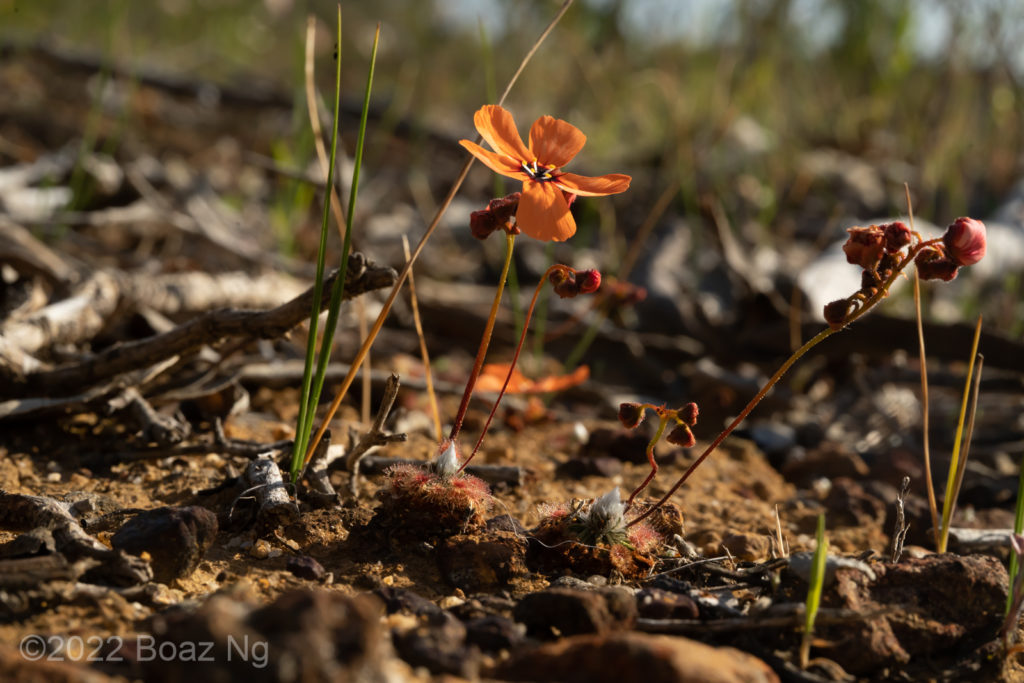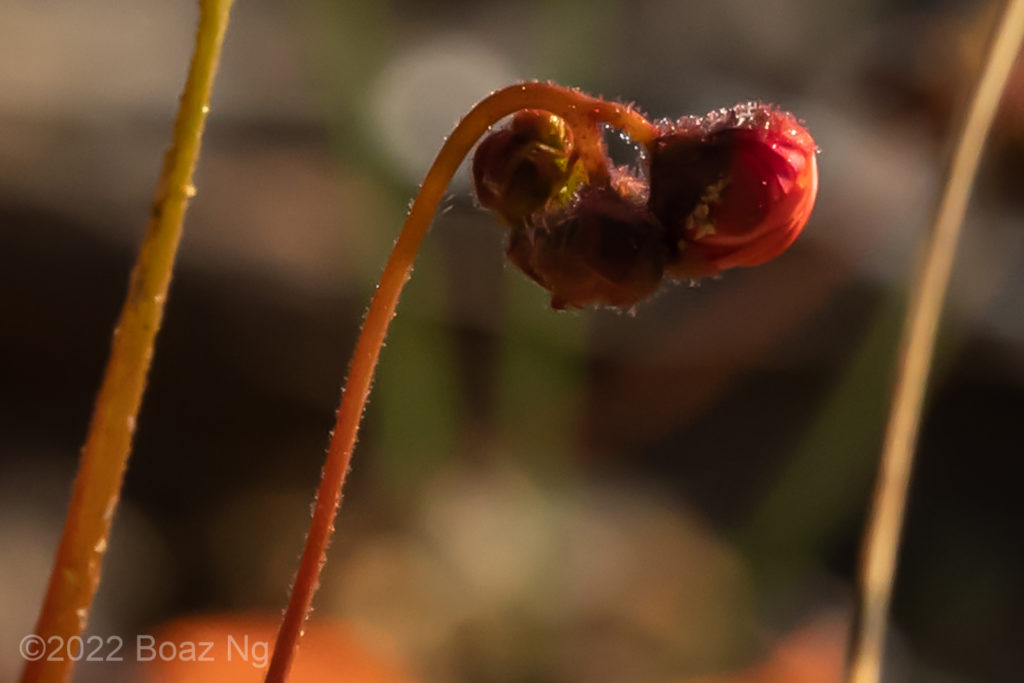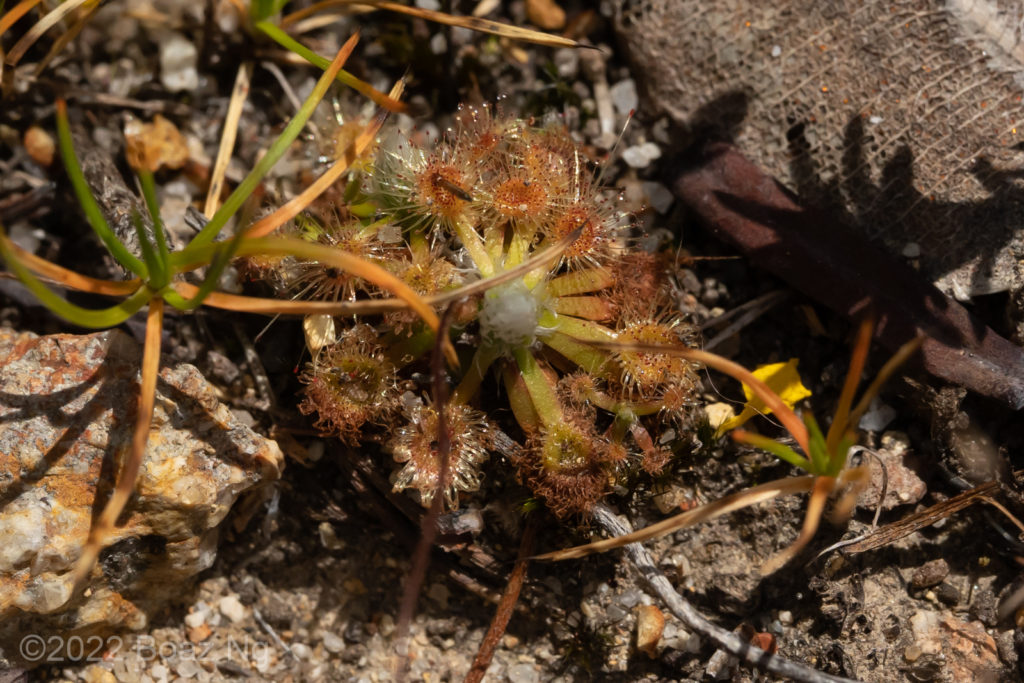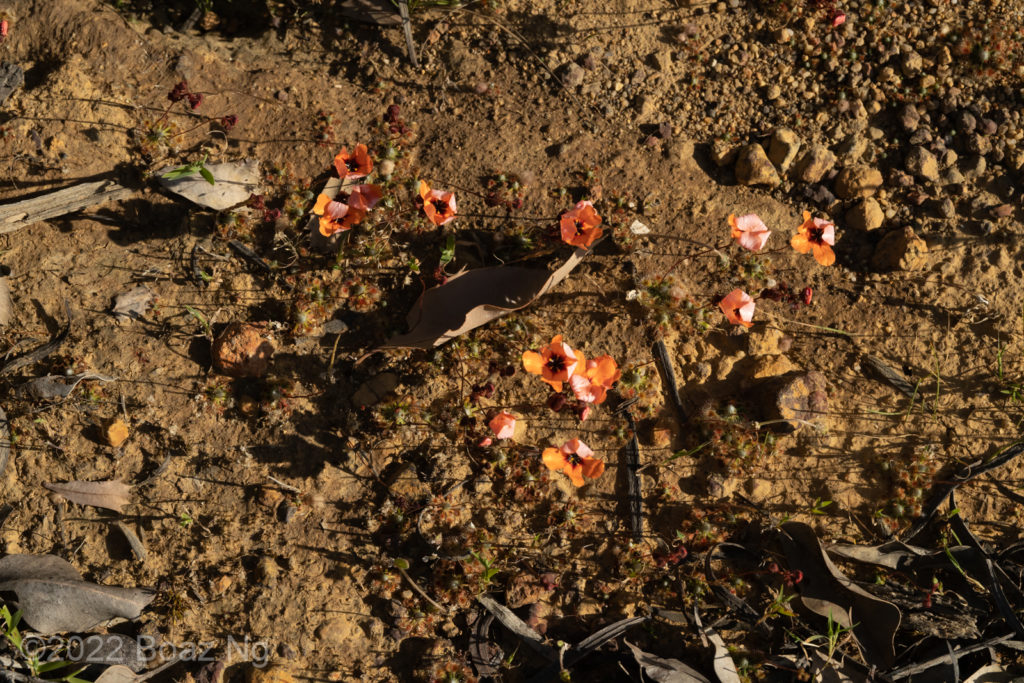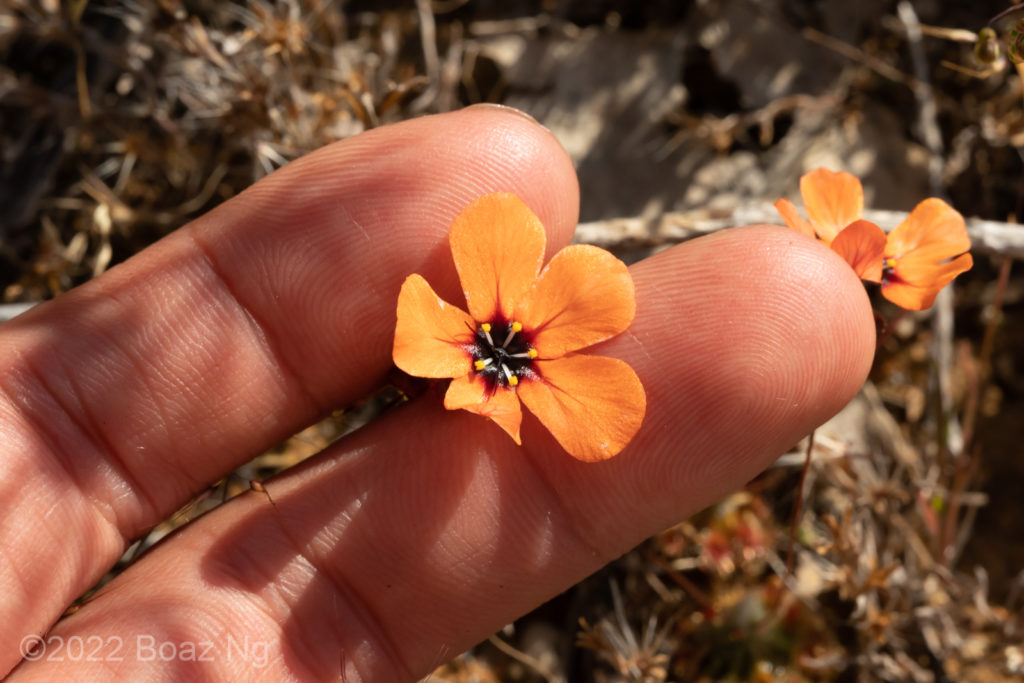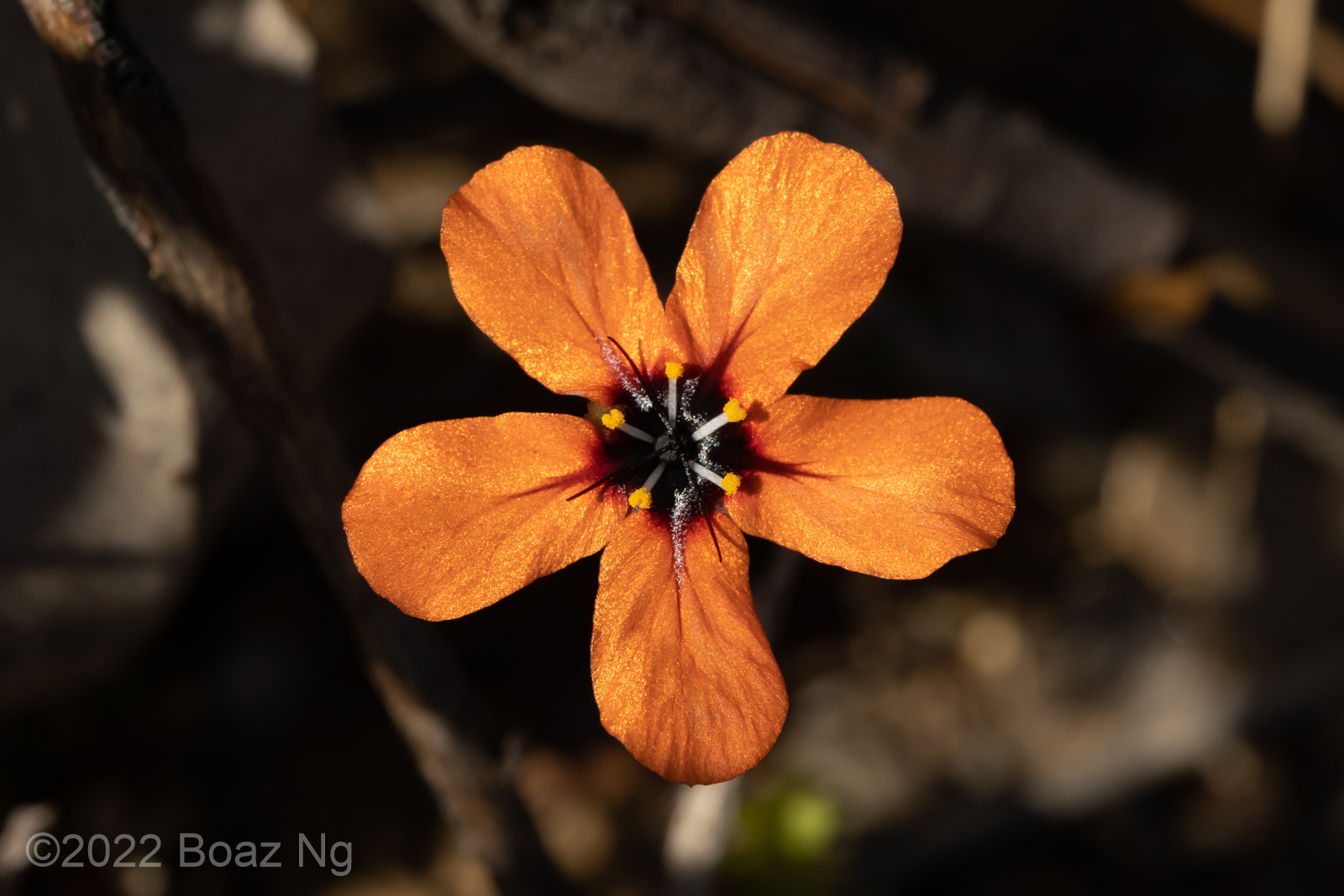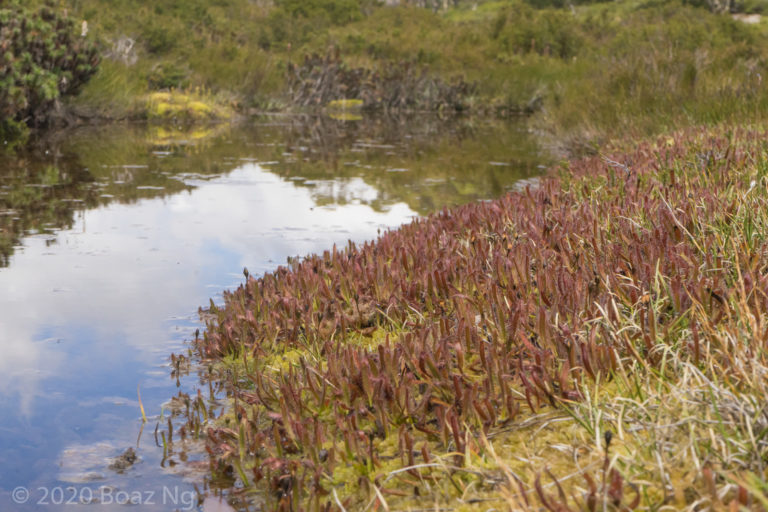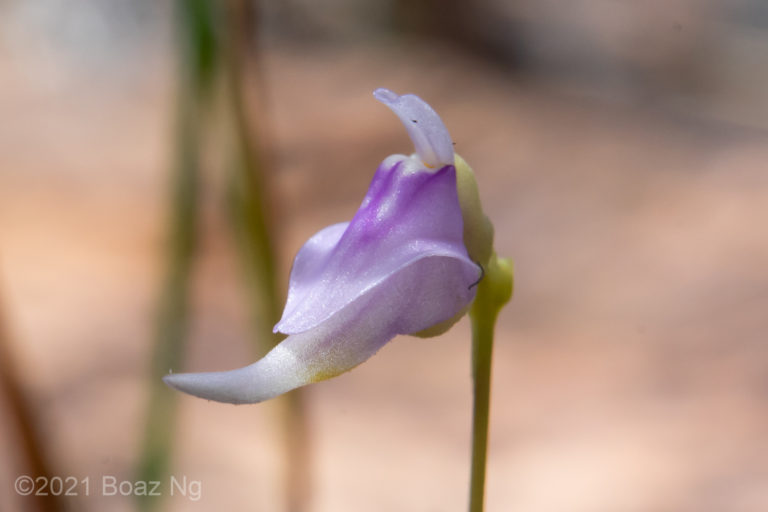Drosera miniata is an orange flowered pygmy sundew endemic to Western Australia. The species is named after the Latin word for cinnabar (miniatus), likely referring to the reddish color of the petals towards the centre of the flowers.
Drosera miniata has a flat rosette of leaves up to around 1.8 cm in diameter. The flowers are metallic orange with black centres up to 2 cm in diameter. The petals are rounded at the extremity, narrowing very slightly towards the middle and bulging slightly again at the centre. The petals are well separated from each other, slightly overlapping towards the centre of the flower. The three stigmas are whiplike in that they are long, thin and tapering. The filaments that support the anthers are white. The flower stalk is sparsely covered in glands.
The species grows in the hills near Perth, extending eastwards in the Wheatbelt. It inhabits clayey substrates in sloped habitats, often in exposed habitats in association with granite outcrops.
Drosera miniata is distinguished from other orange flowered pygmy sundews in the first instance by its three whiplike stigmas. This trait is shared with D. albonotata, D. barbigera, D. bindoon and D. coomallo. It is distinguished from those species by its flat rosette (D. barbigera has a raised rosette), white filaments (those of D. albonotata and D. bindoon are black) and the sparse covering of glands on the flower stalk (the covering of glands on D. coomallo is dense). It is especially similar to D. coomallo but is not sympatric in range (D. coomallo grows in the hills north of Perth while D. miniata grows east of Perth).
